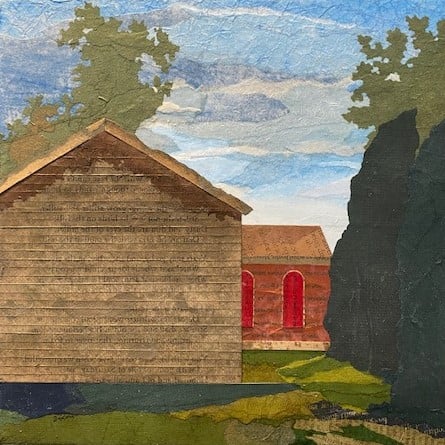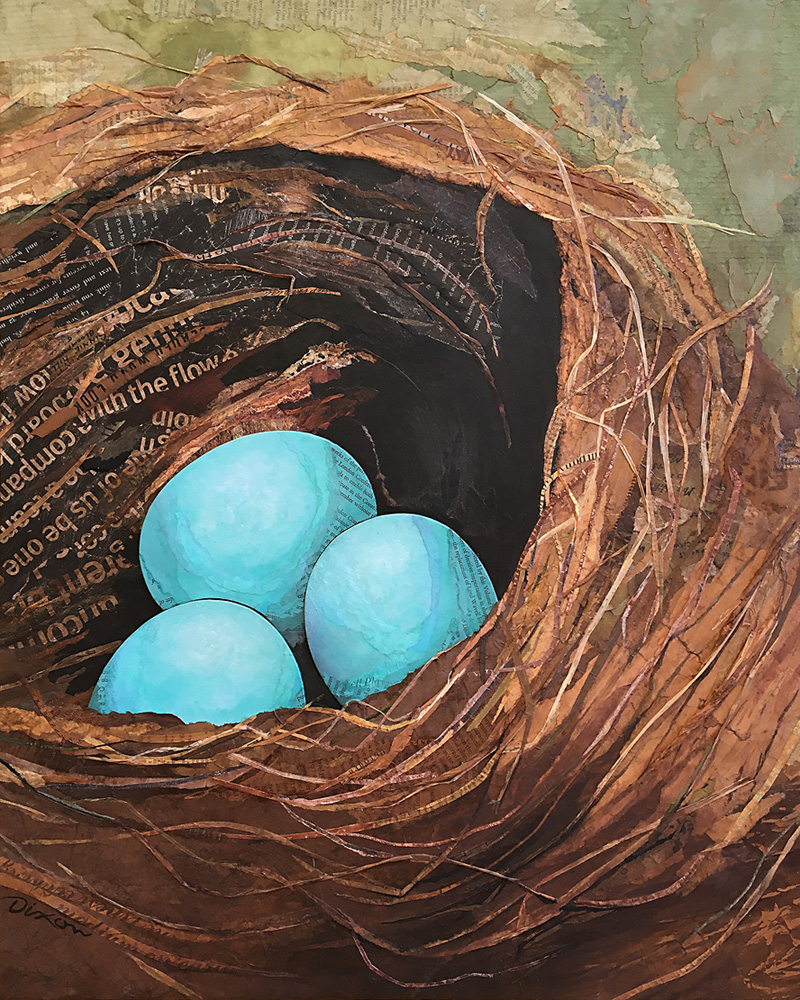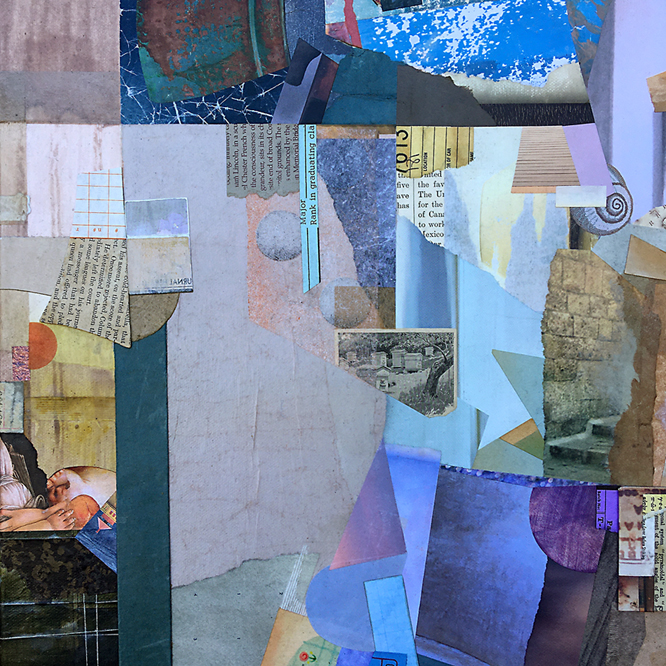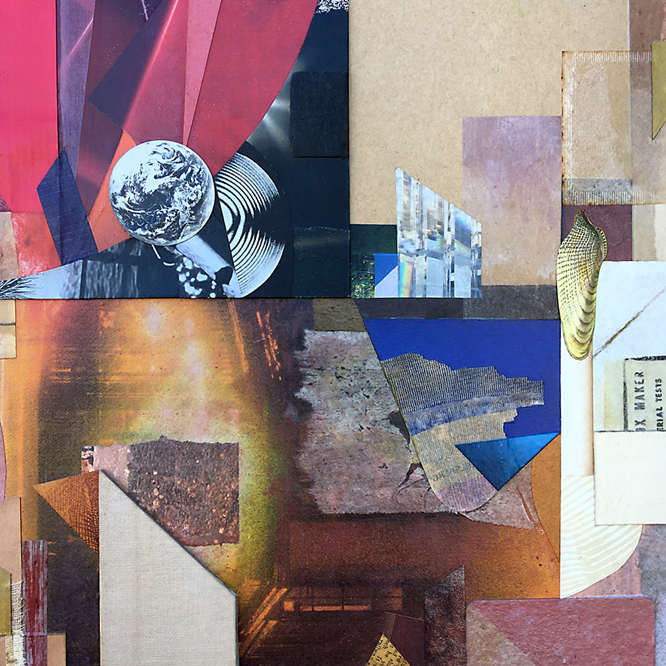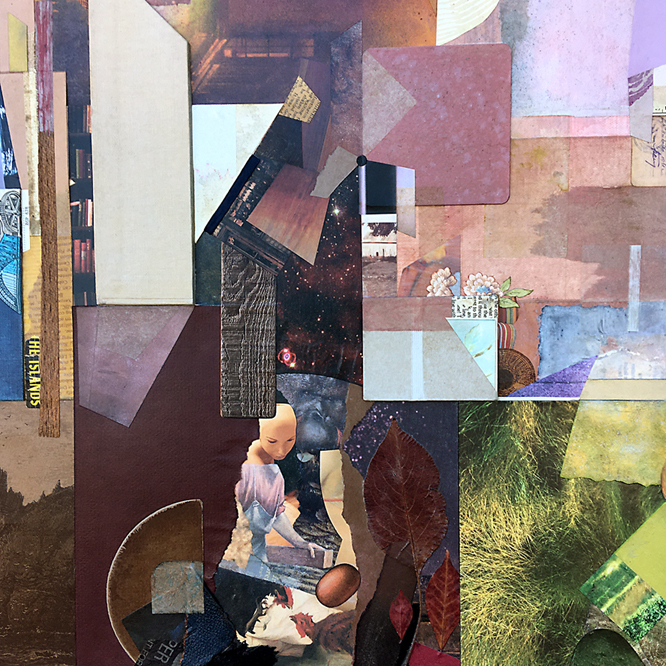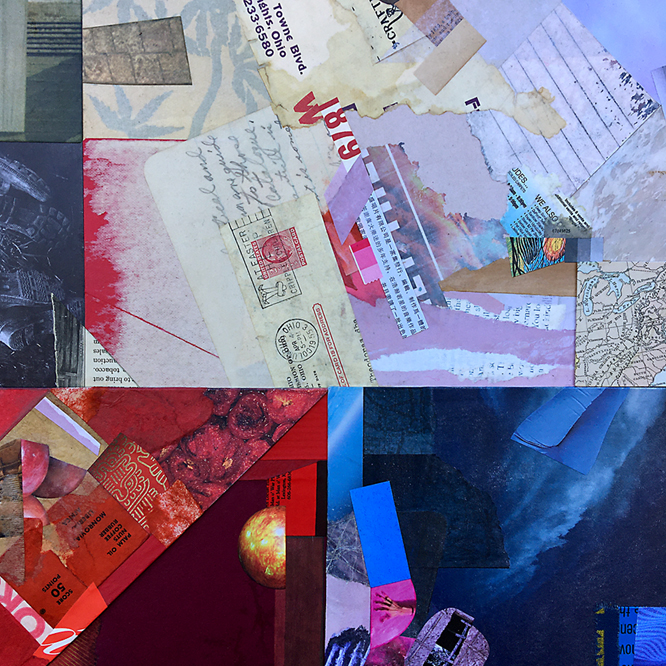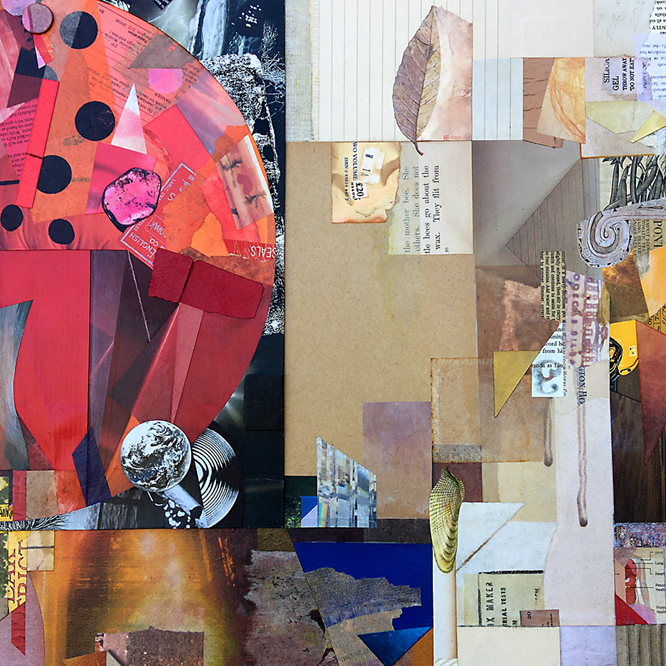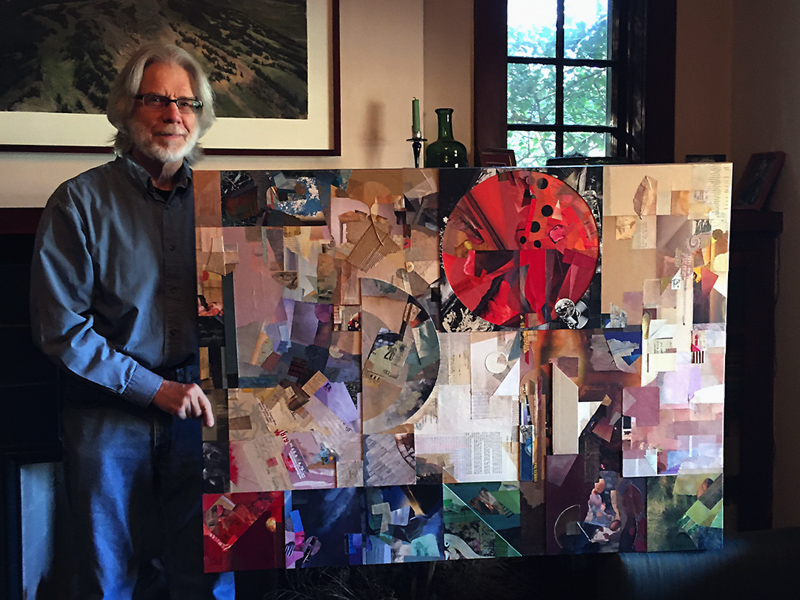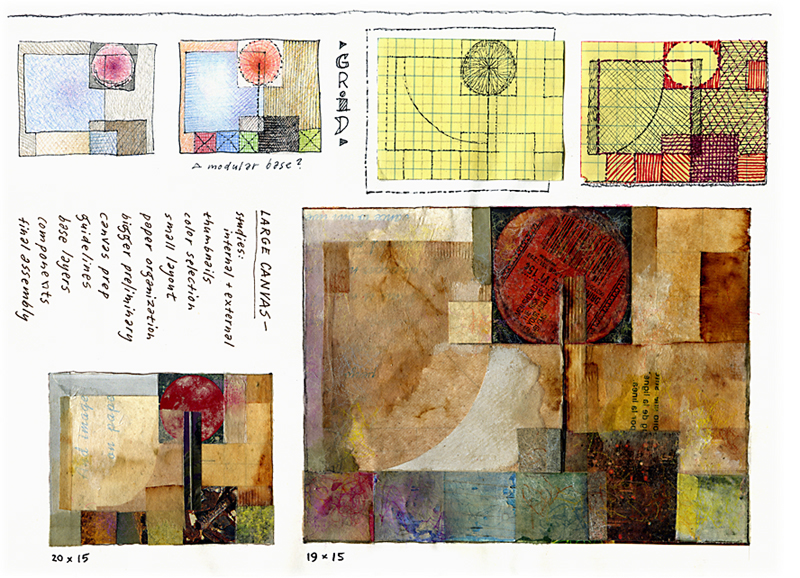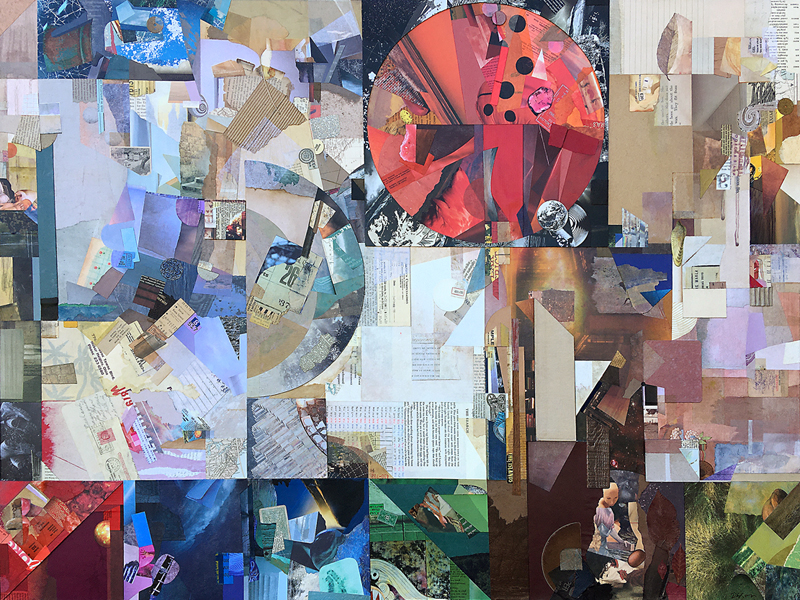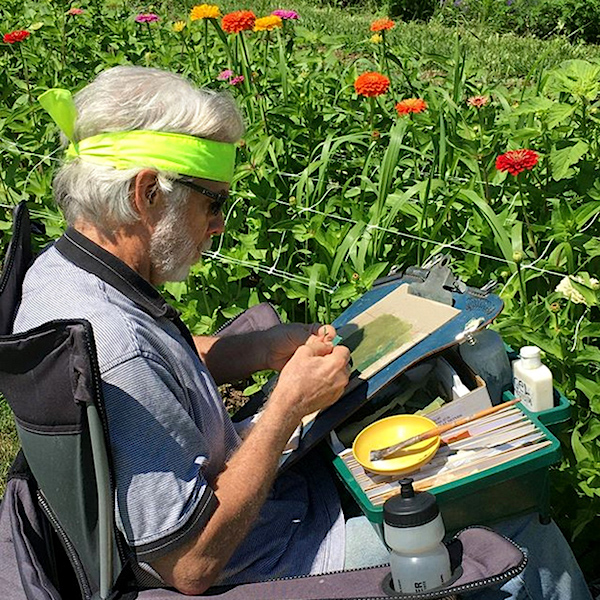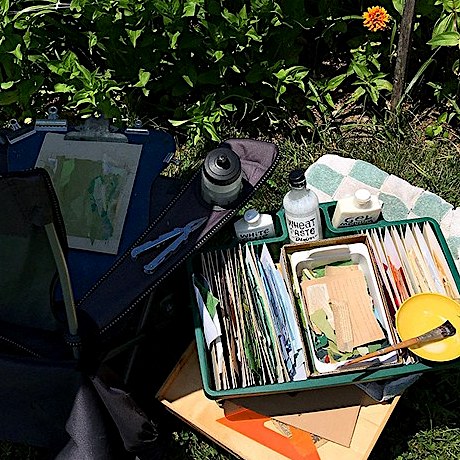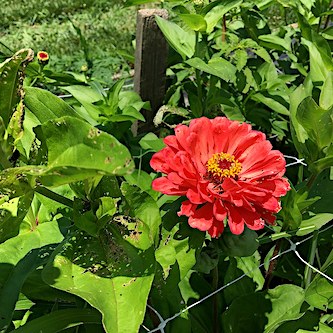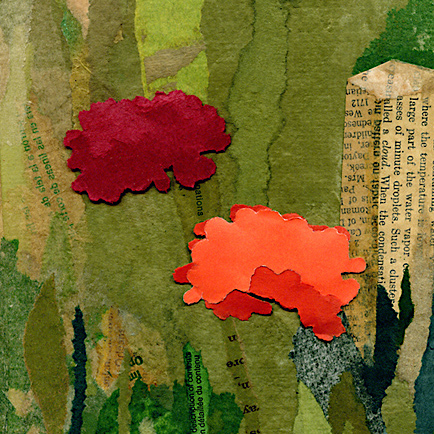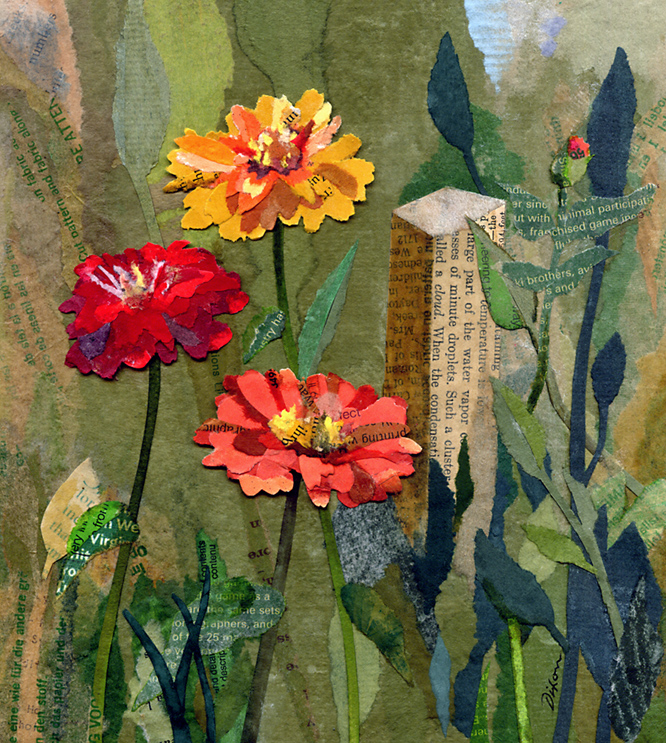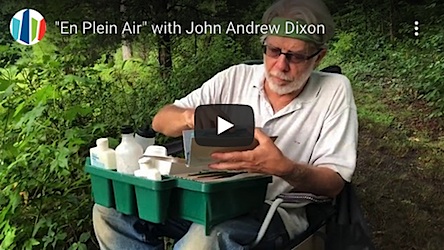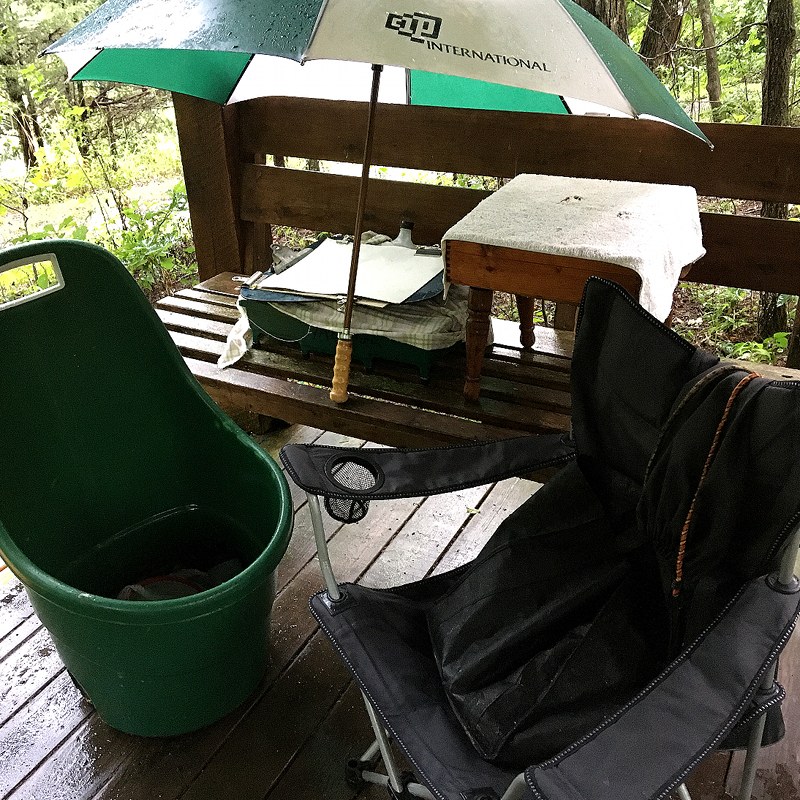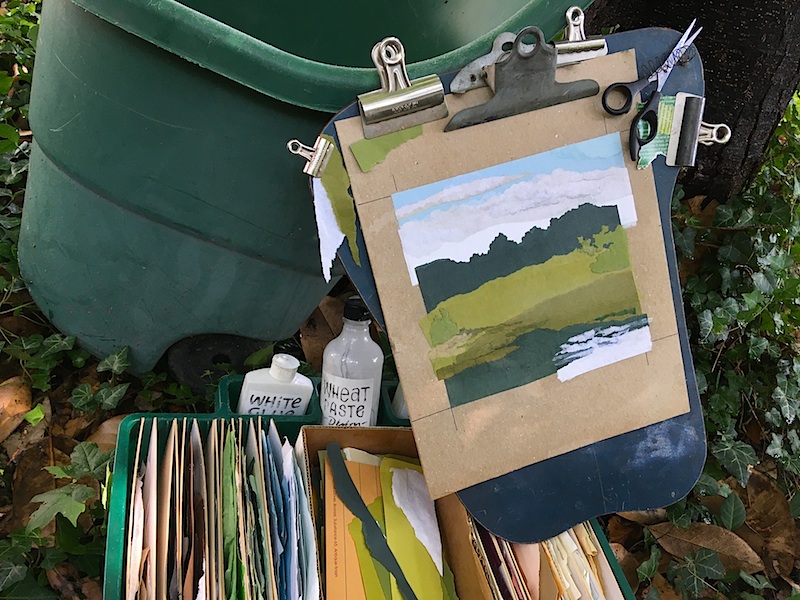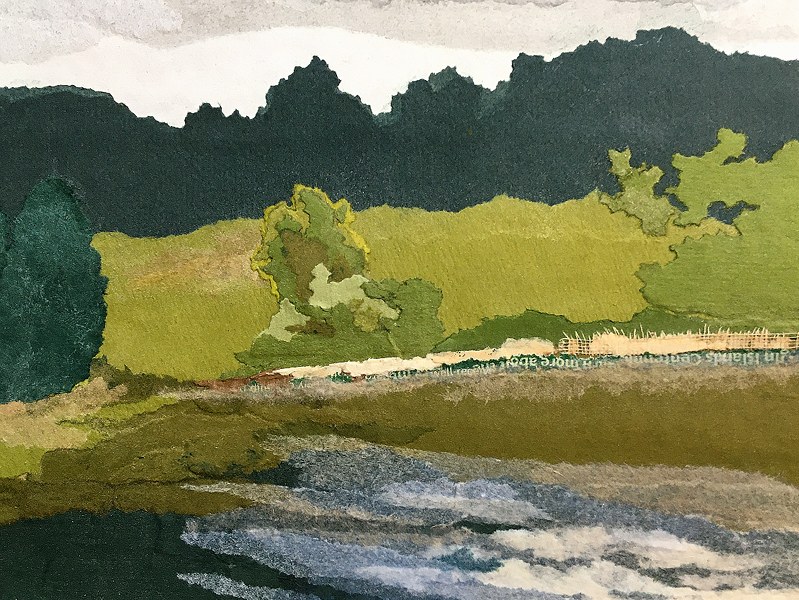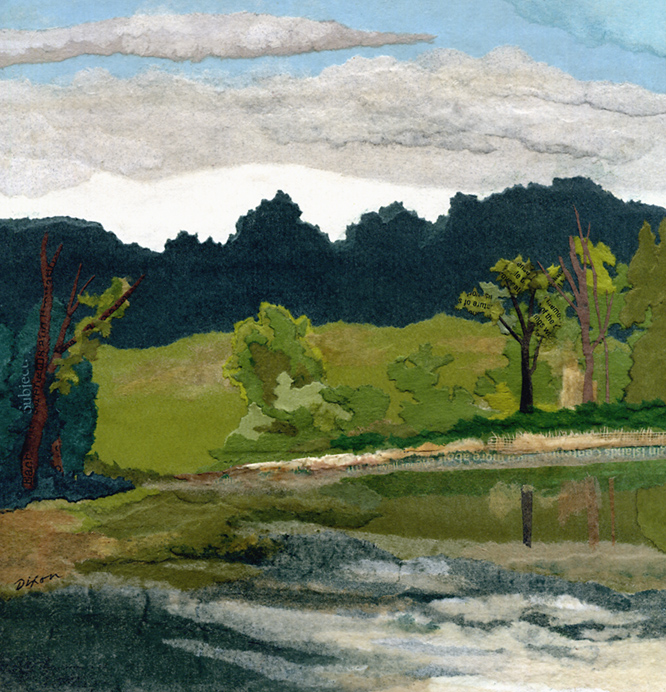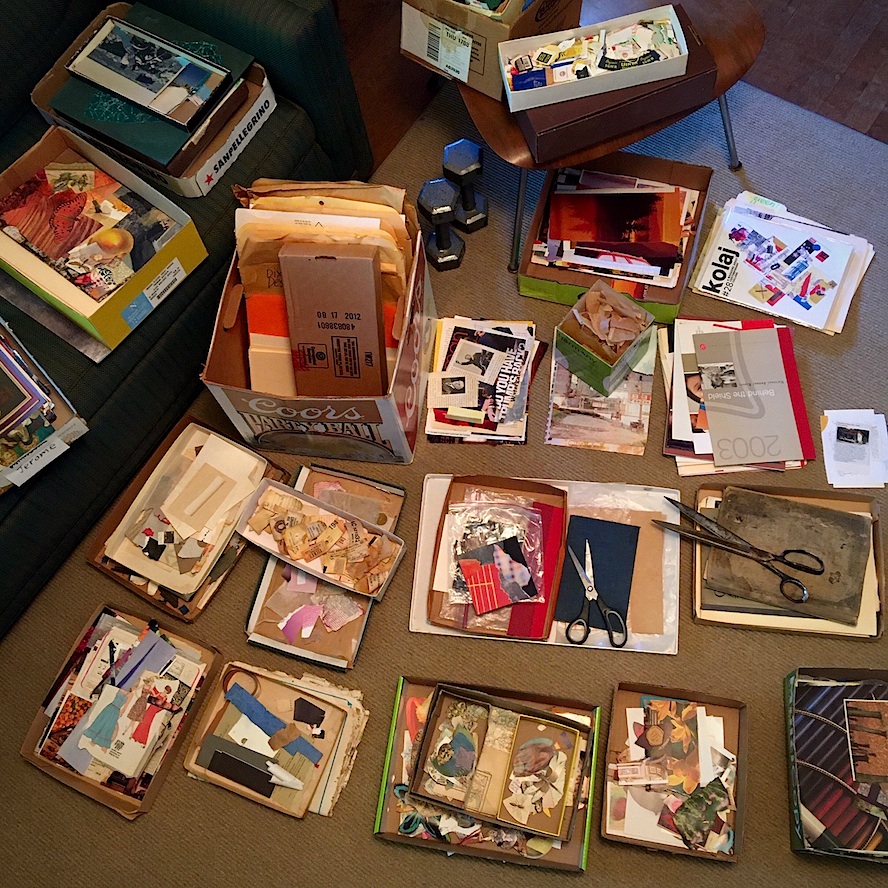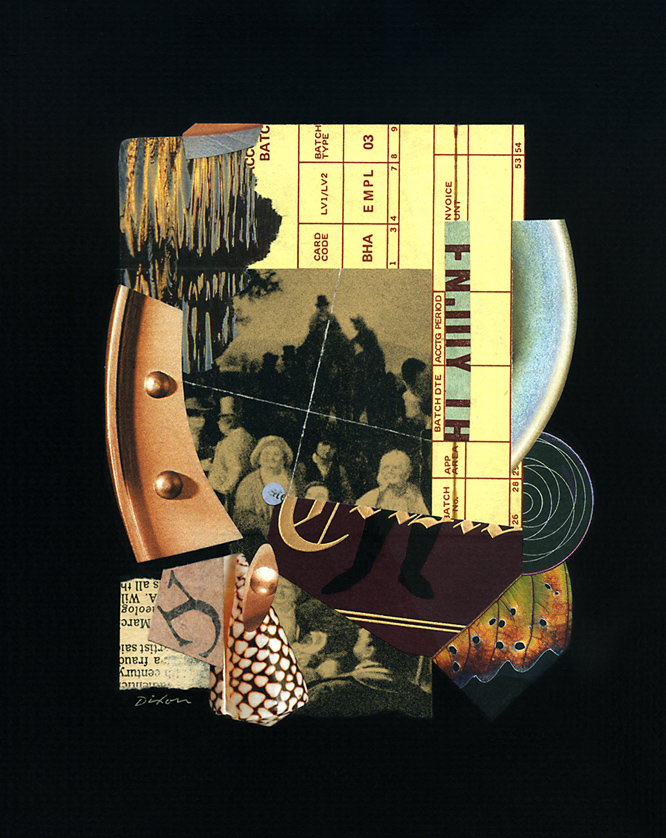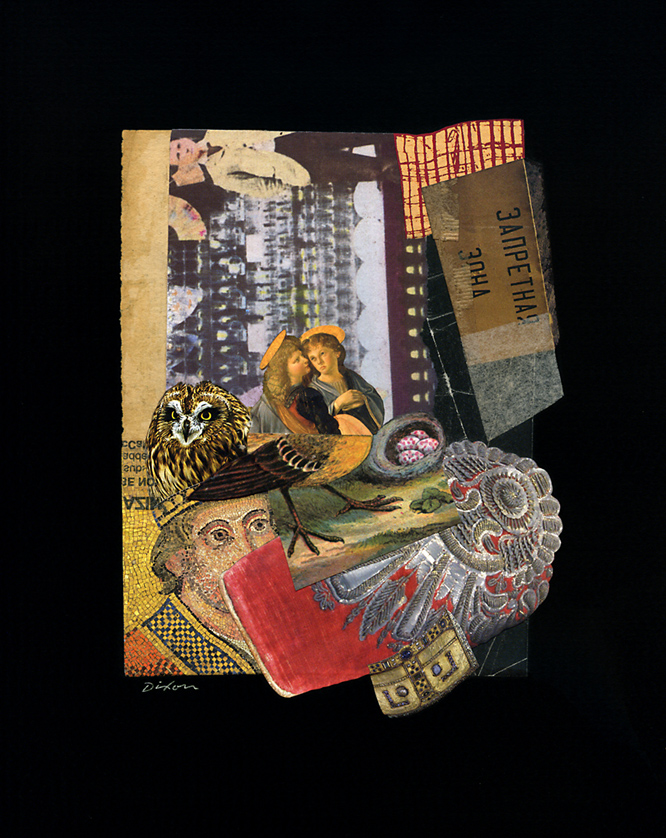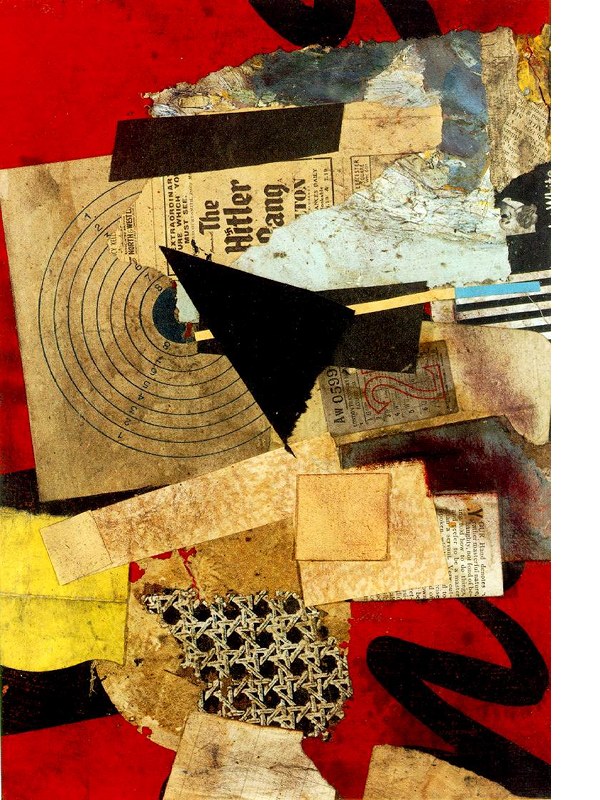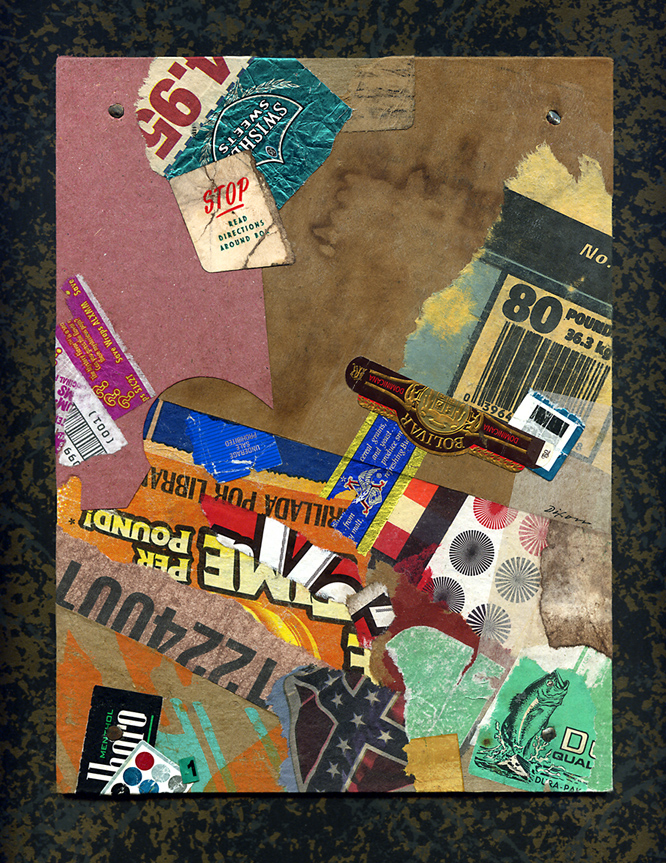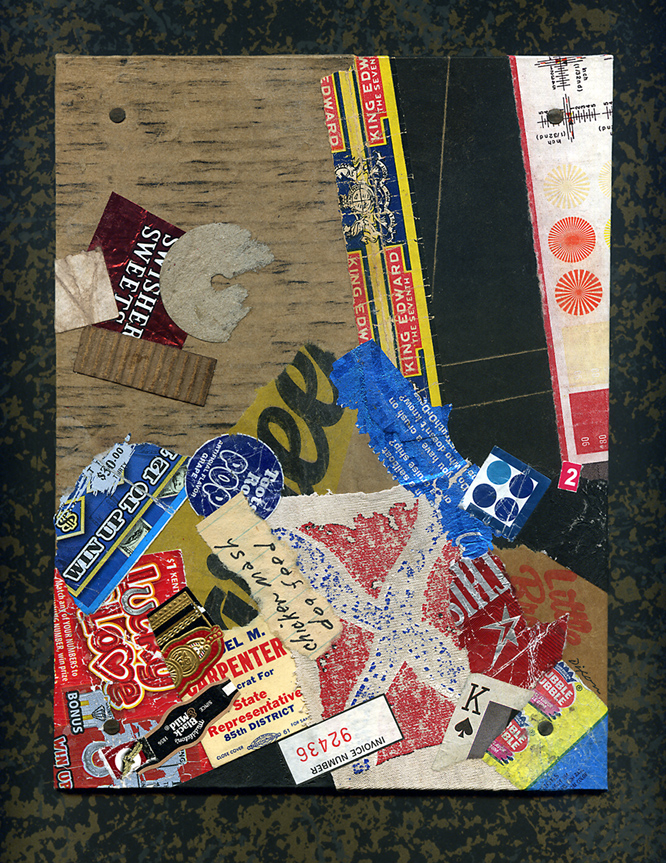“If everything seems under control, you’re just not going fast enough.”
— Mario Andretti
One week ago, I spent a windy Saturday in frantic competition with the clock, and managed to get an outdoor collage artwork framed and delivered for Lexington’s annual Paint the Town plein air event. At the opening reception that same evening, I was stunned to get a prompt sale and 2nd-place prize. It was one of the most exhilarating twelve hours I’ve experienced in quite a while.
Oh, the dubious lengths some of us will go to chase artistic intensity — even the temporary madness of extreme deadline pressure — all in the pursuit of rapt spontaneity. Heaven help me!
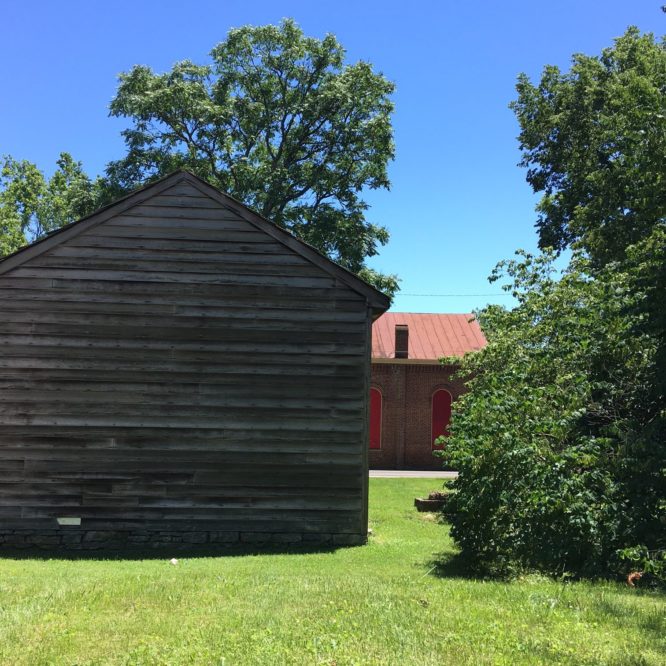
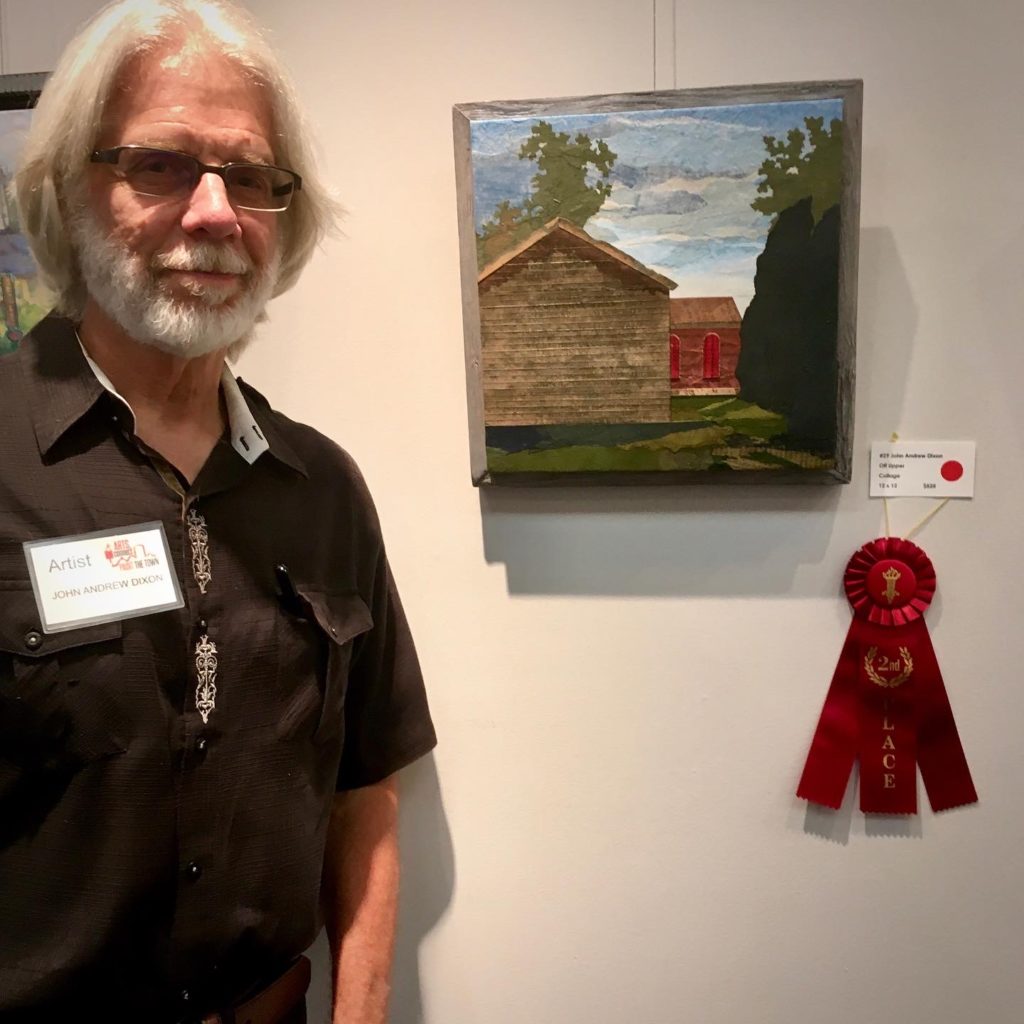 It doesn’t seem so long ago when I first took my collage obsession out of doors, and this kind of open challenge was a goal too absurd to contemplate. I had scouted the location and spent a couple days in preparation. By the time I’d registered a blank canvas, raced to my site and set up, one of the precious six hours had evaporated. I began to battle the breeze (nothing new there). Nor were the other 40 artists involved my foes. It was clear that the only towering opponent I faced was a daunting imperative to speed up my process. I’ve never pasted paper so fast in my life!
It doesn’t seem so long ago when I first took my collage obsession out of doors, and this kind of open challenge was a goal too absurd to contemplate. I had scouted the location and spent a couple days in preparation. By the time I’d registered a blank canvas, raced to my site and set up, one of the precious six hours had evaporated. I began to battle the breeze (nothing new there). Nor were the other 40 artists involved my foes. It was clear that the only towering opponent I faced was a daunting imperative to speed up my process. I’ve never pasted paper so fast in my life!
The judge said this about my piece: “I was very interested in the way this artist managed to create such an evocative landscape using collaged paper — and on a windy day! Places and buildings often hold so many memories and meanings, and the use of text on the siding of the buildings — with the words appearing in reverse, so they become texture and tone — adds another level of meaning.”
It’s gratifying, and profoundly reinforcing, to have a knowledgeable evaluator find significance in aspects that have evolved gradually to become a natural part of my plein air method. I appreciate her remarks, the organizing effort of all those with Arts Connect, the camaraderie of the participating artists, the buyers (Scott and Paul), the indispensable support of my dearest partner — and you, reader, for visiting here and for reading all of this!
Onward to the next challenge!
Off Upper
plein air collage on canvas by J A Dixon
12 x 12 inches + handmade frame
• Second Place Prize / S O L D
